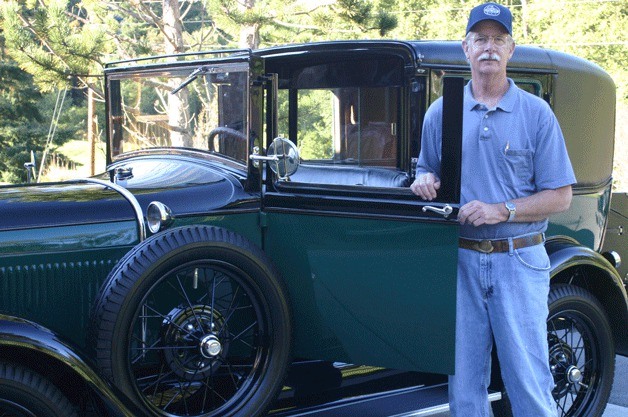When Pete Walstrom falls, he falls hard. For all four wheels.
“I fell in love with that Model A the first time I saw it,” Walstrom said Thursday. “I’m addicted.”
The infatuation has flowered since 1967, when he bought his first Ford Model A, a 1930 coupe complete with rumble seat.
“I drove it through high school and college and across the country,” Walstrom said. “I still drive it.”
He also owns a 1930 Model A pickup truck, still in good condition, that he bought on eBay.
“I call it a 20-footer,” he said. “It looks good from about 20 feet.”
But his pride and joy is an extremely rare 1929 Model A Town Car limousine. Only 1,198 were built from December 1928 to early 1930, and only 18 remain in the world, Walstrom said.
“I joined a Model A club in 1967, and the first magazine I got had the town car on the cover,” Walstrom said Thursday. “I said I gotta have that car someday.”
Twelve years ago, he got one — in dozens of pieces piled in boxes, cigar tins and other containers.
“When you buy a car like that, it’s called a basket case,” Walstrom said. “Luckily, the parts were all there. It took me about a year to put it back together.”
Walstrom is the third owner of the town car. To get the money to buy it, he had to part with two other precious vehicles he had restored, a 1963 Corvette and a 1929 Ford fire engine.
“I had to make some sacrifices,” he said.
Today, he said, his little limo is worth considerably more than its original sales price of $1,400 in 1929.
Walstrom said Edsel Ford, Henry’s son, came up with the idea for the town car as a way to boost sales and to get the company into the prestigious high-end market that was dominated by Packard, Cadillac and Buick.
At the time, a standard Model A sold for between $400 and $600, depending on the model. The town car, designed to be chauffeur-driven, sold for more than twice that.
But the problem was it didn’t sell, thanks to brand loyalty and atrocious timing.
Since the town car essentially was a fancy body placed on a standard Model A chassis, people with money stuck with their bigger, heavier Packards, Cadillacs and Buicks, Walstrom said.
Then along came the Depression.
“Ford couldn’t sell the cars,” Walstrom said. “They sat on the lots for a long time. They started selling them as taxis, converting them to four-door sedans. That’s why there are only 18 left.”
A few town cars were sold intact, however — complete with open driver’s compartment and closed passenger compartment; leather seats in the front, Bedford corduroy, a cigar lighter and notepad, pencils and mirror for the ladies in back.
The owner of the Steinway piano company bought a town car, and so did Rudolph Spreckels of the Spreckels Sugar Company, and the owner of Cartier jewelers.
“Joan Crawford had one,” Walstrom said.
The first guy who owned Walstrom’s car also owned a dairy in Southern California.
“He sat in the front, so he could smoke his cigars, and his wife sat in the back,” Walstrom said.
He said the original owner drove the car to Canada and back once, but after that the car “pretty much sat until the mid-’60s,” when it was bought by a man who trailered it to his home in Ohio.
Walstrom said the Ohio guy took the car apart, planning to restore it when he retired, but never got around to it. Walstrom ended up with the parts.
He said his town car has only 13,000 miles on its odometer, and that he rarely drives it, preferring to keep it show-ready. He won’t take it out of the garage when it rains. The furthest he’s driven it at one time is about 20 miles, he said.
“Mechanically it’s great, but it’s a show car,” Walstrom said. “Every rock ding is a skip of a heartbeat. And there are too many deer.”
The car has won first-place trophies in its division at three international shows held by the Model A Ford Club of America, the Antique Automobile Club of America and most recently the prestigious Concours d’Elegance in Kirkland.
“The Concours is for high-dollar exotic cars,” Walstrom said. “People send cars from museums to compete in the show.”
Walstrom, 57, a former firefighter in San Diego, Calif. retired to Whidbey Island about seven years ago and brought his Ford collection with him. He also has a 1977 Ford pickup that he drives every day.
He said he has no plans to expand his collection, “but I may build a bigger garage.”
And he plans to hang onto the town car for the duration, perhaps donating it in his will when he dies to a planned Model A museum in the Midwest.
“Or if I live long enough, I may sell it for extended care and pill money,” he added.



